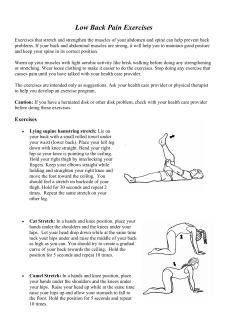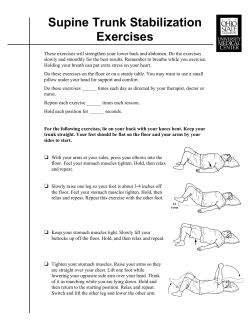
How to Do a Perfect Handstand
How to Do a Perfect Handstand By Amy Van Deusen, About.com Guide http://gymnastics.about.com/od/skillhowtos/ss/handstand.htm Why Learn a Great Handstand? Learning how to do a handstand is one of the most important steps to becoming a good gymnast. Sooner or later, you'll be doing a handstand on just about every event, and learning a solid one will help you improve quickly in the sport. Here's how to do -- or perfect -- your handstand. A Warning: These tips are not meant in any way to replace a knowledgeable coach. About.com and Amy Van Deusen cannot be held responsible for any accidents in gymnastics – it is an inherently risky sport and you must be sure to take the necessary safety precautions such as proper progressions, the right matting and the use of spotters. By reading this article you agree that any advice you follow is at your own risk. Find a Wall Start with a wall, preferably a padded one. Make sure you have plenty of open space all around you, and a padded surface underneath you. 1 Kick Up Stand about four to five feet away, facing the wall. Lift your arms straight up over your head. Lunge forward and place both hands in front of you on the floor, shoulder-width apart, about a foot away from the wall. Keep your fingers spread out slightly and facing forward. Using the momentum from your lunge, kick one leg up toward the wall, and then follow it with your other leg. Keep your arms straight. It doesn't matter which leg you lead with -- you should do what feels most comfortable. If you aren't able to get all the way up into a handstand it can help to have a spotter who pulls your legs up. Work on Your Body Position Once you get into a handstand, check your form and positioning. Try to be as straight as possible: Keep your legs straight and together, with your toes pointed towards the ceiling. Tighten your stomach and back so you aren't arching your back or bending in the hips. Peek at your hands, but don’t stick your head out. Push down through your palms so your shoulders and arms are fully extended, elbows always locked out. Build Up Your Strength and Balance Once you can kick up to a straight handstand, practice holding it for a few seconds longer each time. This will help you strengthen the muscles you'll need to hold it without a wall, and improve your balance as well. 2 Try it Without the Wall When you feel ready, attempt your handstand without using the wall. You may want to have a spotter to help you balance. The spotter should hold your legs once you kick up. In your first attempts, you might be a little nervous that you will kick too hard and go right over the top. A spotter should be able to prevent this from happening, but you will want to learn some good ways to come out of your handstand when you don’t have a spotter: Roll out: Bend your arms, tuck your head under (chin to your chest), and do a forward roll out of your handstand. Pirouette: Twist your shoulders and walk one hand around. Your body will make a quarter turn, and you will be able to step down without going over the top. Though this method seems more complicated, most gymnasts prefer it once they learn it. Perfect Your Handstand When you are successfully doing a handstand on your own, have someone take a look at your body position. Is your body straight like a pencil? The tighter you are, the easier it will be for you to hold a handstand. While they're looking, ask them to take a picture of you -- after all, you're doing a handstand! 3
© Copyright 2025

















